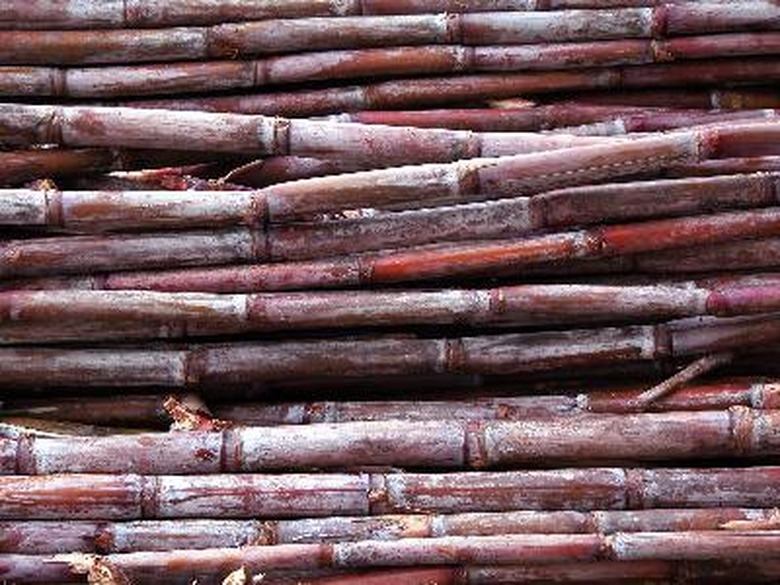When To Plant Sugarcane?
A large grass, sugarcane (Saccharum officinarum) grows 10 to 16 feet tall in regions where frosts don't occur. Sugarcane may be grown easily across the southern half of the United States, but it persists as a perennial only in U.S. Department of Agriculture plant hardiness zones 8b and warmer. Interestingly, sugarcane is grown for making syrup in the Deep South and the "Sugarcane Syrup Belt" stretches from Louisiana to Georgia.
Planting Time
Sugarcane "seed cane," as it is called, isn't seed at all but short cane segments that are planted in the soil to make new plants. In tropical areas like Hawaii or Puerto Rico, sugarcane is planted any time of year. In South Florida, where frosts are rare, plant seed cane anytime from fall to spring. Across the Deep South, in U.S. Department of Agriculture plant hardiness zones 8 and 9, planting is either in late summer, mid-August to late September or immediately after the first fall frost. This allows roots to grow, but leaves don't sprout until spring.
- A large grass, sugarcane (Saccharum officinarum) grows 10 to 16 feet tall in regions where frosts don't occur.
- Across the Deep South, in U.S. Department of Agriculture plant hardiness zones 8 and 9, planting is either in late summer, mid-August to late September or immediately after the first fall frost.
Regional Considerations
Sugarcane will not overwinter in USDA zones 7 and colder, but the seed canes may still be planted in spring when the soil isn't frozen and it is dry enough to till and work. Sugarcane grown in these areas will be annual; underground roots will die when the winter temperatures plummet well below freezing.
Planting Seed Cane
Seed cane ranges in length from 6 to 24 inches long, but must include at least one ring node from where roots and leafy shoots emerge. In loam or clay-loam soils, create a planting furrow 3 to 7 inches deep, but slightly deeper if the garden soil is sandy or rich in porous organic matter. Plant the canes in a single row, spacing canes end-to-end. Additional rows should be spaced with 4 to 10 feet between them.
Growing Sugarcane
Sugarcane prospers in a moist, well-drained soil that is warm. Purdue University notes that adding lime to acidic soils improves the development of sugars in the canes across the growing season. Warm, humid weather accelerates the grass' growth and vigor, eventually becoming a multi-stemmed clump. Always plant sugarcane in a sunny garden location. For adequately sized canes with ample sugar, a long growing period, free from frost, of 12 to 15 months is needed. Otherwise, grow sugarcane as an ornamental garden plant or conversation piece that is killed each year by winter's cold.
- Sugarcane will not overwinter in USDA zones 7 and colder, but the seed canes may still be planted in spring when the soil isn't frozen and it is dry enough to till and work.
- In loam or clay-loam soils, create a planting furrow 3 to 7 inches deep, but slightly deeper if the garden soil is sandy or rich in porous organic matter.
